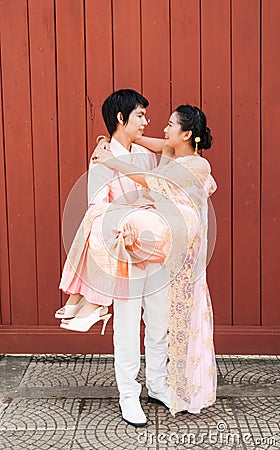We will look at key terms, the roles of households and firms, and some exceptions to the model in terms of leakages and injections. In goods and services markets, households buy finished products from firms that are looking to sell what they make.
The diagram provides an intuitive illustration of how the stock of capital currently available is increased by the flow of new investment and depleted by the flow of depreciation. On the other hand, the business sector exports goods to foreign countries and its receipts are an injection in the circular flow or money.
The government sector consists of the economic activities of local, state and federal governments. Flows from households and firms to government are in the form of taxes.
Flow magnitudes include income, spending, saving, debt repayment, fixed investment, inventory investment, and labor utilization. Capital is a stock concept which yields a periodic income which is a flow concept. For example, U.S. nominal gross domestic product refers to a total number of dollars spent over a time period, such as a year. Therefore, it is a flow variable, and has units of dollars/year. In contrast, the U.S. nominal capital stock is the total value, in dollars, of equipment, buildings, and other real productive assets in the U.S. economy, and has units of dollars.
They also receive royalties, interests, dividends, profits, etc. for investments made in foreign countries. On the other hand, the business sector https://simple-accounting.org/ makes payments to the foreign sector for imports о capital goods, machinery, raw materials, consumer goods, and services from abroad.
How Are Money Flow And Real Flow Different?
Since the household sector spends the whole income on the purchase of goods and services, therefore, there are no savings and investments. The household sector receives income from business sector by providing the factors of production owned by it. The model represents the movement of money and resources throughout the economy. The model represents the changing relationships between actors. Money flow and real flow are the two main aspects of the circular flow of income economic model.
Capital
Both refer to exchanges of goods and services for money, but the two concepts differ in how they refer to the opposite sides of these exchanges as they relate to individuals and companies. The household then uses the income to purchase goods and services from firms. Next, firms use factors from households that consist of capital, labor, and land.
Thus, there is a circular flow that makes up our economic system, with firms buying factors from households and using those factors to create goods and services that they then sell to households. In the most commonly used version of the circular flow model, there are two flows. One is the flow of factors and the other is the flow of goods and services.
What is the objective of the circular flow?
The circular flow of economic activity is a model showing the basic economic relationships within a market economy. It illustrates the balance between injections and leakages in our economy.
The Circular Flow In A Three
These flows combine in a circle, showing how the economy is a continuous loop of buying and selling. This demonstrates for us the way in which households and firms are interconnected in our economy. The circular flow of income is a model of the economy in which the major exchanges are represented as flows of money, circular flow diagram definition goods and services, etc. between economic agents. The circular flow analysis is the basis of national accounts and hence of macroeconomics. In the simple circular flow diagram, firms will pay all the money that they collect from the goods and services they sell to households for their factors of production.
Reduced consumption, in turn, reduces the sales and incomes of the firms. The all pervasive economic problem is that of scarcity which is solved by three institutions (or decision-making agents) of an economy. They are actively engaged in three economic activities of production, consumption and exchange of goods and services.
Households provide labor, capital, and other factors of production to firms, and this is represented by the direction of the arrows on the “Labor, capital, land, etc.” lines on the diagram above. For the factors of production, these are factor incomes known as rent, wages, interest and profit which have been generated in the production process. Thus, money income flows from firm sector to the households.

On the other hand, taxes on business firms tend to reduce their investment and production. The government offsets these leakages by making purchases from the business sector and buying services of the household sector equal to the amount of taxes.
What are the types of circular flow?
The two types of circular flows are: (i) Real flow (ii) money flow.
However, some authors group households, firms, and the financial sector together as the “private sector” and subsequently add the government sector, making the “domestic sector,” and the foreign sector. It spends its entire income on the purchase of goods and services produced by the business sector.
With this money, the households purchase from the firms, manufactured goods and services to satisfy their wants with the result that the same money flows back from households to the firm sector. The five-sector model adds the financial sector to the four-sector model. Thus, the five-sector model includes households, firms, government, the rest of the world, and the financial sector.
Example Of Dynamic Stock And Flow Diagram
Households are the owners of factors of production—land, labour, capital and entrepreneurial ability. They sell the services of these factors and receive income in return in the form of rent, wages, and interest circular flow diagram definition and profit respectively. Expenditure by households implies income going back to firms . Economic goods are goods and services that require scarce resources or factors of production to produce them.
- Households then get a return on their financial capital in the form of stock dividends, bond payments, and the like, just as households get a return on their labor in the form of wages.
- The circular flow of income in a four-sector economy is shown in Fig.
- The savings of households, firms and the government sector get accumulated in the financial market.
- Financial market invests money by lending out money to households, firms and the government.
Circular/low of income refers to continuous circular flow of money income and flow of goods between different sectors of economy. Explain the role of households in the circular flow diagram. Be specific about the flow of money that they receive and pay in circular flow diagram definition addition to what they give and receive from firms. While readers should be aware of the influence that government, exporting and importing, and pricing and production has on businesses and households, it is not necessary to alter the circular flow model.
What Is Circular Flow Of Income?

Income is first generated in production units, then distributed to households and finally spent on goods and services produced by these units to make the circular flow complete its course. Expenditure phase In this phase, the income received by factors of production, is spent on the goods and services produced by firms. the flow of money, goods and services, and factors of production. There is a Trade Surplus for an economy when its exports exceed imports but the economy suffers Trade Deficit when imports exceed exports. Mind, imports are leakages and exports are injections into the circular flow of income in the economy.
Households then offer land, labor, and capital to firms so that they can then produce the goods and services. Households also offer the firms their money in the form of spending when they purchase goods. The circular flow diagram is a basic model used in economics to show how an economy functions. Primarily, it looks at the way money, goods, and services move throughout the economy.
The injections and the withdrawals are equal to each other so the level in the tank is stable, or as economists like to say in equilibrium. The household sector, business sector and the government sector have already been defined in the previous sections. circular flow diagram definition The foreign sector includes everyone and everything beyond the boundaries of the domestic economy. It buys exports produced by the domestic economy and produces imports purchased by the domestic economy, which are commonly combined into net exports .
The householders’ ma receives transfer payments from the foreign sector for the services rendered by them in foreign countries. These are the real flows of goods and services from firms to consumers which are linked with productive resources from consumers to firms through the medium of exchange or barter. Consumers or households own all the factors of production, that is, land, labour, capital and entrepreneurship, which are also called productive resources.









